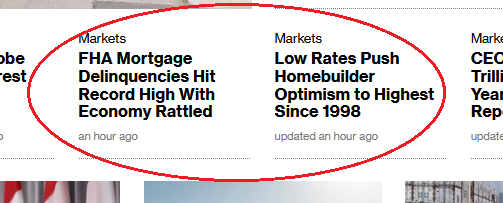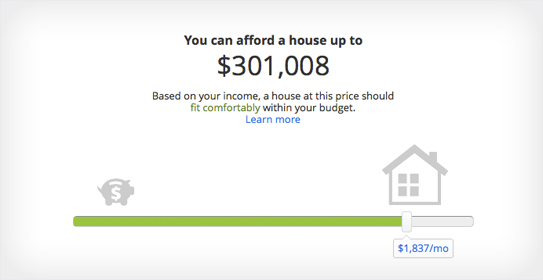Lenders compute your debt-to-income ratio by dividing your month-to-month debt obligations by your pretax, or gross, income. Many lending institutions try to find a ratio of 36% or less, though there are exceptions, which we'll get into below." Debt-to-income ratio is determined by dividing your regular monthly financial obligations by your pretax earnings." DTI sometimes neglects monthly expenses such as food, utilities, transport expenses and medical insurance, to name a few; loan providers may rule out these expenses and may authorize you to borrow more than you're comfortable paying.
You'll desire the most affordable DTI possible not simply to certify with the very best home mortgage lending institutions and purchase the home you desire, but likewise to guarantee you're able to pay your financial obligations and live easily at the same time. Likewise called a home ratio, front-end DTI is the dollar quantity of your home-related expenses your future month-to-month mortgage payment, real estate tax, insurance coverage and house owners association charges divided by your monthly gross earnings.
Back-end ratios tend to be slightly higher, because they take into account all of your regular monthly financial obligation commitments. Which DTI ratio matters more?While mortgage lending institutions typically take a look at both types of DTI, the back-end ratio frequently holds more sway because it takes into account your whole debt load. Lenders tend to concentrate on the back-end ratio for traditional home loans loans that are used by banks or online home mortgage lenders rather than through government-backed programs.
If your back-end DTI is listed below 36%, that's even much better. When you're applying for government-backed home loans, like an FHA loan, lenders will take a look at both ratios and may consider DTIs that are greater than those needed for a standard mortgage: as much as 50% for the back-end ratio. Preferably, however, you'll wish to keep your DTIs as low as possible, despite lending institutions' limits.

Although DTIs are necessary when getting a mortgage, they're insufficient when it pertains to helping you find out what you can manage, states Ira Rheingold, executive director of the National Association of Consumer Advocates." You can have these general guidelines around debt-to-income ratio," he states, "however the larger concern is, will you, as soon as you have that mortgage payment, have adequate cash to make ends fulfill?" Considering that DTIs don't take into account expenditures such as food, health insurance, energies, gas and home entertainment, you'll want to spending plan beyond what your DTI labels as "budget friendly" for you.
This is specifically important considering that DTIs count your income prior to taxes, not what you actually take house every month. The greater your DTI, the more likely you are to struggle with certifying for a home mortgage and making your monthly home mortgage payments. There are a number of methods to decrease your debt-to-income ratio: Don't make any huge purchases on credit before you purchase a home.
While a pay raise at work is another method to reduce your DTI, it might not be possible to get one quickly. That's why it's better to avoid taking on more financial obligation and deal with trimming the debt you have. Most of the times, lenders won't include installment debts like vehicle or trainee loan payments as part of your DTI if you have just a couple of months left to pay them off.
What Percent Of People In The Us Have 15 Year Mortgages Things To Know Before You Get This
He recommends getting your finances in order so that you present yourself as someone with great credit and not a great deal of financial obligation. Before you take a seat with a lender, utilizing a home loan calculator is one method to find out an affordable home mortgage payment for you. The lower your debt-to-income ratio, the more secure you are to lending institutions and the better your finances will be.

The household-owned worth of the United States real estate market is at an all-time high of $26. legal way to get rid of timeshare 12 trillionsignificantly higher than the pre-crisis peak of $22. 68 trillion in 2006. Real estate equity and non-HELOC (home equity credit line) home mortgage financial obligation impressive are likewise at historical highs. At the very same time, the share of homeowners with a home loan, at 62.
Why has this happened? What occurs next? And what does it all indicate? That $26. 12 trillion in total housing worth is composed of two aspects: $10. 36 trillion in exceptional mortgage financial obligation (including house equity lines of credit) and $15. 76 trillion in home equity (the difference in between household-owned real estate and home mortgage financial obligation).
3 percent in 2009 to 39 - how many mortgages to apply for. 6 percent in the first quarter of 2019. On the other hand, real estate equity as a share of aggregate house worths has actually grown from 36. 7 percent to 60. 4 percent over this same period. What describes the lower home loan debt relative how to terminate a timeshare agreement to realty values? Initially, house equity lines of credit are less common than in years past.
Although the exceptional amount of home mortgages leaving out house equity credit lines surpassed its pre-recession peak in the second quarter of 2019, relative to house values, it sat at approximately 35. 4 percent in the very first quarter of 2019, well listed below its 2009 high of an approximated 54. 7 percent.
The share of property owners with a home mortgage declined gradually between 2008 and 2017, from 68. 4 to 62. 9 percentthe lowest level since a minimum of 2005. Conversely, the share of owner-occupied households with no mortgage has actually reached 37. 1 percent over the very same nine-year duration. Why this took place: The moving structure of owner-occupied households with and without a home loan owes to a number of factors, consisting of the surge in all-cash sales in the years instantly following the economic downturn, families' concentrate on debt reduction, and home loan credit conditions that stay tight.
Older families are far more likely than more youthful homes to have paid off their home loan. Though the share of senior individuals with a home loan has actually increased slowly with time (figure 2), to 38 percent in 2017 for those ages 65 and older, this share is well listed below 80 percent for those ages 35 to 54.
Excitement About What Is The Interest Rate Today On Mortgages
Whether the share of owner-occupied households with a home mortgage continues to reduce will depend on the interaction between the following aspects: the rate at which young, novice property buyers purchase homes (which depends on the other products in this list) housing cost credit schedule the strength of the economy including the job market To a lower level, it will likewise depend upon how numerous elderly households have a mortgage.
If brand-new and younger purchasers significantly use money rather of mortgages to buy their homes, competitors among lending institutions will increase, which, in turn, might help reduce the restrictive credit requirements in place today - what kind of mortgages do i need to buy timeshare relief rental properties?. However, the potential remedy for still-tight credit standards might have a little effect on homeownership given the limited supply of stock for sale in much of country.
By increasingly paying off their home mortgages and transforming their whole house value into equity, existing property owners create a cushion for emergencies and retirement. Nevertheless, the development in the share of house owners ages 65 and older with a home mortgage bears enjoying as it might represent an emerging danger to the mortgage market.
Low mortgage rates have actually helped press U.S. home mortgage financial obligation to the greatest level ever. In the 2nd quarter of 2019, Americans' mortgage balances totaled $9. 4 trillion, $162 billion more than the previous quarter, according to data launched Tuesday by the Federal Reserve Bank of New York City. This went beyond the previous peak of $9.